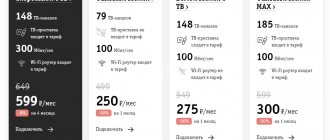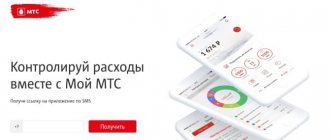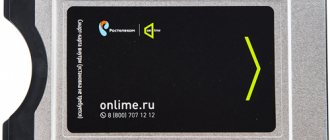Many of us have heard about the SIP protocol. But not everyone has an idea of what it is and what distinguishes SIP telephony from traditional telephony. This protocol allows users to gain access to the service both from a desktop PC and from mobile gadgets. Today’s article will tell you in simple words what SIP telephony is and what the operating principles of this protocol are.
- What is the difference between IP, SIP and VoIP
- What is SIP protocol
- Development history
- What is it used for?
- How the SIP protocol works
- Principles of the SIP Protocol
- Security measures when using the SIP protocol
- SIP servers for Linux
- SIP servers for Windows
What is the difference between IP, SIP and VoIP
If the user has ever been interested in virtual PBXs, then the above terms are probably familiar to him. For this reason, you first need to understand what the differences are between SIP telephony, IP and VoIP protocols. This will prevent you from getting lost in terms and will make it possible to immediately understand how everything works.
We need to start with the broadest term, IP, which is an internet protocol.
IP protocols can rightly be called “the beginning of all beginnings,” because they connected all the computer networks of the planet into a single mechanism - the global Internet.
For this reason, each PC has its own unique IP address required for information exchange.
To transmit data over a network in audio format, a completely different technology is used; it is called VoIP - voice over IP. It is thanks to it that users can exchange any type of data that contains a voice - make calls via the Internet, broadcast webinars, or view video recordings from surveillance cameras.
IP telephony is a general name for telephone communication using the Internet. This is one of the main components of the VoIP protocol. But this only includes video messages and video calls. As the name says, communication services are implemented using the same IP protocol.
SIP telephony is the narrowest term in this structure. If IP telephony is the name of the technology itself, then SIP is one of its varieties, namely the communication protocol.
All the details about the SIP protocol will be discussed below. In the meantime, we can summarize the general results for each term.
| IP | This is a protocol for transmitting information on a network |
| VoIP | This is a technology for intranet broadcasting of any type of voice |
| IP telephony | This is a technology for video messages and calls within the Internet. |
| SIP | This is a type of protocol that guarantees the functioning of IP telephony |
Integration with business services
UIS SIP telephony can be integrated with any third-party IT system, be it a CRM, ERP system, or others, which allows you to automate the work of the sales department (and any other “telephone” department). One-button integrations with amoCRM, Bitrix24 and RetailCRM are very popular. A special compact widget has been developed for amoCRM, which allows you to process calls without closing the CRM window and takes up very little space on the screen. Integration also makes it possible to automate outgoing calls within amoCRM, conveniently transfer calls to colleagues, and much more.
In addition to the main CRM, UIS has ready-made integrations with more than 30 systems, including industry ones. Their list can be viewed here. If your company does not use a universal CRM, but a highly specialized one, pay attention to this list - perhaps you will find yours in it. Any integration makes it possible to enjoy the basic benefits of the solution:
- storing and listening to recordings of conversations in CRM;
- opening a card in CRM with information about the client upon an incoming call.
And if your employees work in a unique, self-written CRM, thanks to the open API, you can integrate it with UIS telephony.
Recently, one client told us how, thanks to integration with the Telegram messenger, he views notifications on his wristwatch about all the calls that come into his call center. The UIS API allows you to combine telephony with many different IT services, even with a smart home system (there are companies where this is useful).
Do you want to connect UIS telephony?
What is SIP protocol
SIP is a protocol for establishing a session and transmitting information, describing a method for determining and terminating a subscriber's Internet session. It includes the exchange of multimedia data: online games, video conferencing, instant messages, etc.
SIP is a network-type (application layer) protocol in the open systems coherence model. Its task is to describe the method by which a subscriber application requests the start of a connection from other software located on the same network, using its unique name. For example, this could be a physically remote client.
The protocol defines methods of agreement between clients on the disclosure of exchange channels based on other protocols that can be used for direct data transfer. The system allows the addition or elimination of such channels during established sessions. It also connects and disconnects auxiliary clients. In simple words, the system allows more than two parties to participate in the exchange procedure - conference-class communication. The protocol also establishes the order in which sessions will end.
The basis of the SIP protocol is the “request/response” position, reminiscent of HTTP and SMTP technologies (transmission of mail notifications). Thanks to this, SIP telephony can be quite easily integrated with various kinds of web services. Built to replace older protocols such as H.323, it ensures control over session management for VoIP technology. This provides more integration opportunities for its use within telecommunication systems.
Where can I call
IP telephony using the SIP protocol allows you to make calls in any direction:
- Within a network between two or more subscribers.
- Between networks, using the full address.
- To landline and mobile numbers around the world.
You can also call directly to a SIP subscriber using city gateways - call the provider’s number, then dial the subscriber’s internal number. By the way, the number itself is a SIP ID - this is the internal identifier of the subscriber. The full number looks like name@domain. For example, this is the full subscriber ID of the VoIP provider Zadarma.
VoIP operator Zadarma also provides high-quality voice transmission, giving subscribers a cash bonus for testing the quality of communication.
Development history
The development of the protocol was carried out by the IETF MMUSIC company back in mid-1996. The lead engineers were Hening Schulsri and Mark Handley. SIP was approved in late autumn 2000. According to the documentation, it acted as a signaling protocol in the 3GPP project, and also acted as a key protocol in the IMS architectural environment. Together with other protocols, SIP is part of the technical basis of VoIP technology.
The basis of the protocol consists of the following principles:
Feedback from our reader
My company required IP telephony that would meet a number of requirements: the presence of a PBX, the ability to use numbers from different regions, reasonable prices and the ability to quickly resolve issues. I chose from several providers on the market, and finally settled on Zadarma, it meets all our requirements. Read more >>>
- Simplicity - consists of only 6 functions.
- Independence from transport steps.
- Personal mobility of users - they move within the network without restrictions. Users report their movements using the “REGISTER” command.
- High level of network scalability – the number of elements in the network structure can be easily expanded.
- High level of protocol extensibility – the ability to add new functions.
- Excellent integration with other Internet protocols - SIP is part of the global multimedia architecture.
- Interoperability with other signaling protocols – compatibility with other smart networks.
Announcement
- Legal communication. Maintaining . The first article in the series “on the legalization” of home networks by Anton Bogatov.
- Network advertising posters;
- Explanatory note and preliminary design of a home network;
- How to remove a television signal from P-296;
- Sketches of nodes from different providers (mainly racks).
- Crossing the railway (several photos);
- Networks of educational institutions in Germany (unfinished construction);
- The traditional point is links to interesting places on the Web. Send letters - they are very necessary for reviews. Be sure to inform us whether your signature or link is needed, or whether it is better to do without it;
- In horror films - “a competitor’s node has been found!”

What is it used for?
SIP is typically used to connect/disconnect calls in voice and video formats. Protocol clients use UDP and 5060 TCP ports for this purpose. In addition, the technology can be used in any other applications where it is necessary to establish connections. These could be, for example, warning systems or mobile terminals. There are more than one RFC specific to this protocol that specifies the behavior of these applications. Often, voice and video data are transmitted using other auxiliary protocols, such as RTP.
SIP was developed with one key goal - to create an IP-based signaling protocol that has advanced functionality to handle calls and options found in the current PSTN. These functions are not defined by the protocol itself; it is aimed exclusively at the processes of setting up calls and alarms. At the same time, SIP supports such functional network elements as proxy servers and user agents. They guarantee a basic set of options: dialing numbers, calling other phones, sound notification of users about the call status.
Benefits of technology
Calling and maintaining communications via the Internet today is much more profitable and practical than using traditional telephony. For example, SIP technology allows you to quickly and inexpensively provide a company with communications. Let's look at the benefits for business and more:
- Budget savings. Connecting this protocol is much cheaper than providing an analog PBX office. In addition, you have a multi-channel number, excellent speed and connection quality at your disposal. You can easily increase the number of operators in your network with minimal investment of time and money. Try doing this in an analog PBX.
- Telephonization. SIP telephony can be described in one phrase: “plug and play.” For example, you just moved into a new office and haven’t had time to settle in yet, but you want to maintain contact with clients. How to do this quickly and without worries if you have a laptop with a headset, computer or gadget? Only using SIP technology. Even 3G or 4G mobile Internet is suitable for a stable connection.
- Payment is made only at basic tariffs for telephone services, regardless of the subscriber’s location. This is very convenient for large companies with an extensive network of representative offices, branches, and departments in different cities.
- Integration of telephony with analytics systems, 1C, CRM. For example, using this protocol in a call tracking service, you can check various metrics: the efficiency of operators, the sales department, track the advertising channels through which customers come, and much more. All this increases the effectiveness of advertising campaigns and the level of service.
- The SIP connection is well protected from external eavesdropping, which cannot be said about analog communication lines.
- The technology allows you to create a remote call center without spending money on purchasing stationary equipment and renting an office.
- Many options - voice mail, forwarding between employees and departments, answering machine, voice menu. Also, SIP technology allows you to prioritize calls, focusing on managers’ workload, and record conversations.
- The protocol works perfectly with callback and missed call modules on the site. Together, they increase the conversion rates of calls into applications by an average of 60%.
- Availability of software for any operating systems, mobile devices, smartphones.
We answered the question, SIP telephony: what is it and how does it work. Let's look at where this technology is most actively used.
SIP telephony is used by commercial and government corporations, small and medium-sized businesses to create a high-speed network for intra-corporate communication, as well as for communication with partners and clients. For example, large call centers, shopping pavilions and mega-markets use this IP protocol.
Ordinary users also use programs and equipment for Internet calls. SIP technology significantly reduces telephony costs.
How the SIP protocol works
The SIP protocol model is purely client-server.
Its key functional elements are:
- A user terminal is a device through which the user controls the installation and termination of a call. It is implemented both in hardware and in software.
- Proxy servers are devices that receive and process requests from user terminals, carrying out actions appropriate to the request. Each consists of a client part and a server part, and therefore they can receive calls by initiating a request and returning a response.
- Forwarding servers are devices for storing records of the current location of each terminal and proxy server on the network. They do not manage calls or generate personal inquiries.
- Servers for determining the location of users are a special database with address data. Necessary to guarantee personal mobility of users.
Principles of the SIP Protocol
Any SIP-based telephone network has the ability to support the most modern services provided, in most cases, by SS-7. These two protocols have significant differences, but this does not prevent their complete integration.
SS-7 is a complex intelligent centralized network with simple non-intelligent terminals (standard telephone set). At the same time, SIP, on the contrary, needs an extremely simple and highly scalable network with intelligence integrated into the end elements at the periphery: physical or software terminals.
SIP is used in conjunction with several other types of protocols and takes part exclusively in the signaling part of the communication session. This protocol acts as a carrier for SDP, which describes the characteristics of the transmission of media information within a session, for example, the IP ports and codecs used. In session template usage, SIP is simple packet streams of RTP, which is a direct media of video and voice formats.
The initial proposed variation of the SIP standard was 2.0 and was defined by RFC 2543. Additional clarifications were specified in RFC 3261.
The variation index has remained unchanged to this day – 2.0.
SIP servers for Linux
There are a lot of SIP servers for the Linux operating system. Each of them has both its advantages and some disadvantages.
Below are 3 servers that are best in class according to many experts.
Ekiga
The development of this software was carried out by Damien Sandras. This program is built into Ubuntu by default and is a SIP/NetMeeting client utility. There is support for SIP telephony and integrated address books. It is possible to work within local networks.
Asterisk
This SIP server is one of the most popular for organizing telephony in business. It was developed back in 1999 to replace expensive mini-PBXs. The software allows you to conduct video sessions, interacts with standard telephony and can encrypt calls, preventing eavesdropping. Its only drawback is the complexity of the functionality.
3CX Phone System
This server is very often used for telephone installation of companies with a large number of employees. It can be used as a call center or conferencing software. In addition, it is built into CRM. The main disadvantage of the server is its closed source code, which does not allow you to add your own developments.
Forwarding
It is difficult to find a company that does not need a variety of call forwarding schemes. This is required by the specifics of the employees’ work schedule, the structure of the department, and the distribution of responsibilities. IP telephony will allow you to forward calls in cases where the employee to whom the call is directed is busy or absent from the workplace.
For example, if an employee has left the office, the call will be redirected to his mobile or home phone. If an employee is unable to answer, the call is automatically forwarded to a colleague. When a customer calls after hours, they may be greeted with a voice message stating that the company is currently closed. There are many other situations. Having different call processing options will allow you not to lose incoming calls and prevent potential clients from leaving for competitors.
It is also possible to configure various call distribution scenarios, including through an interactive voice menu. In the latter case, the client will be greeted by a virtual secretary at the very beginning, thanks to which the call will quickly reach exactly the specialist that the caller needs. It may be that there is no need to involve an employee in communication at all - the client calls to find out information that will be communicated to him automatically (for example, the status of the order).
SIP servers for Windows
Two proposals are considered the best SIP servers for the Windows operating system. They have powerful functionality and a wide range of options.
3CX Server
This product is aimed at implementing corporate-type communications of various scales. It does not matter where the office premises are located, even in different parts of the world. The server features maximum voice functionality, the ability to hold conferences, and also supports a huge client audience.











